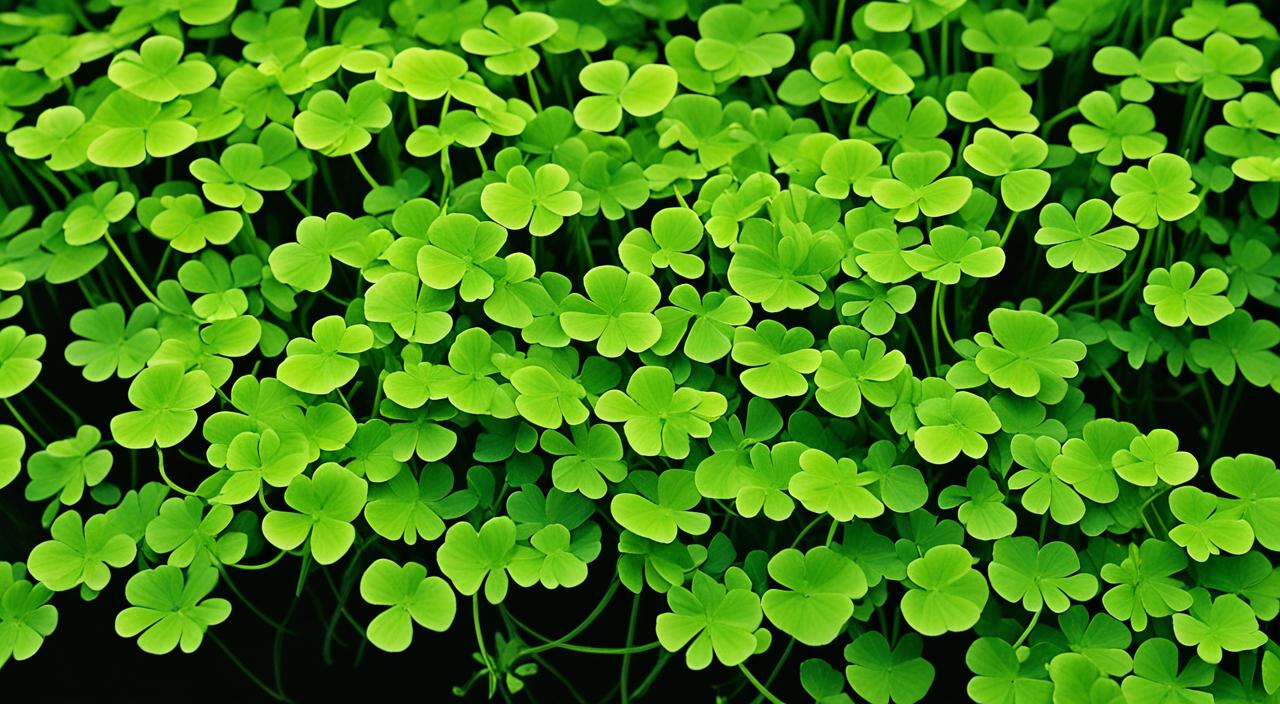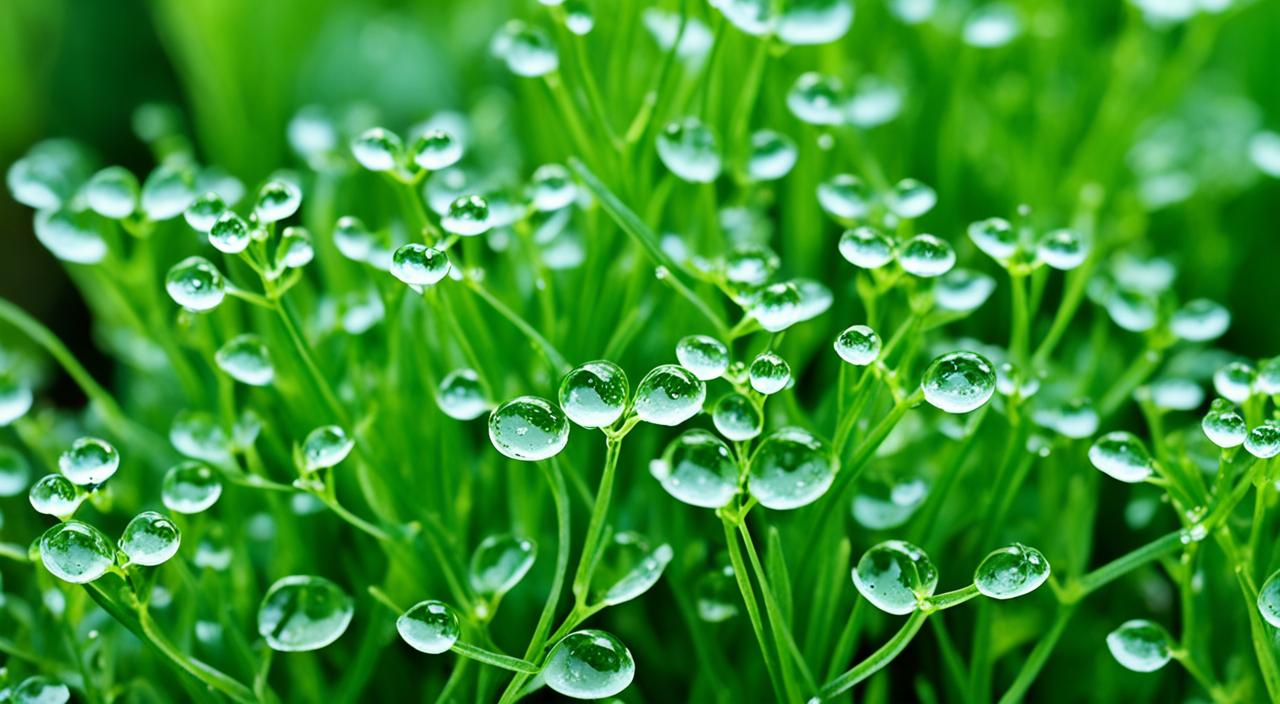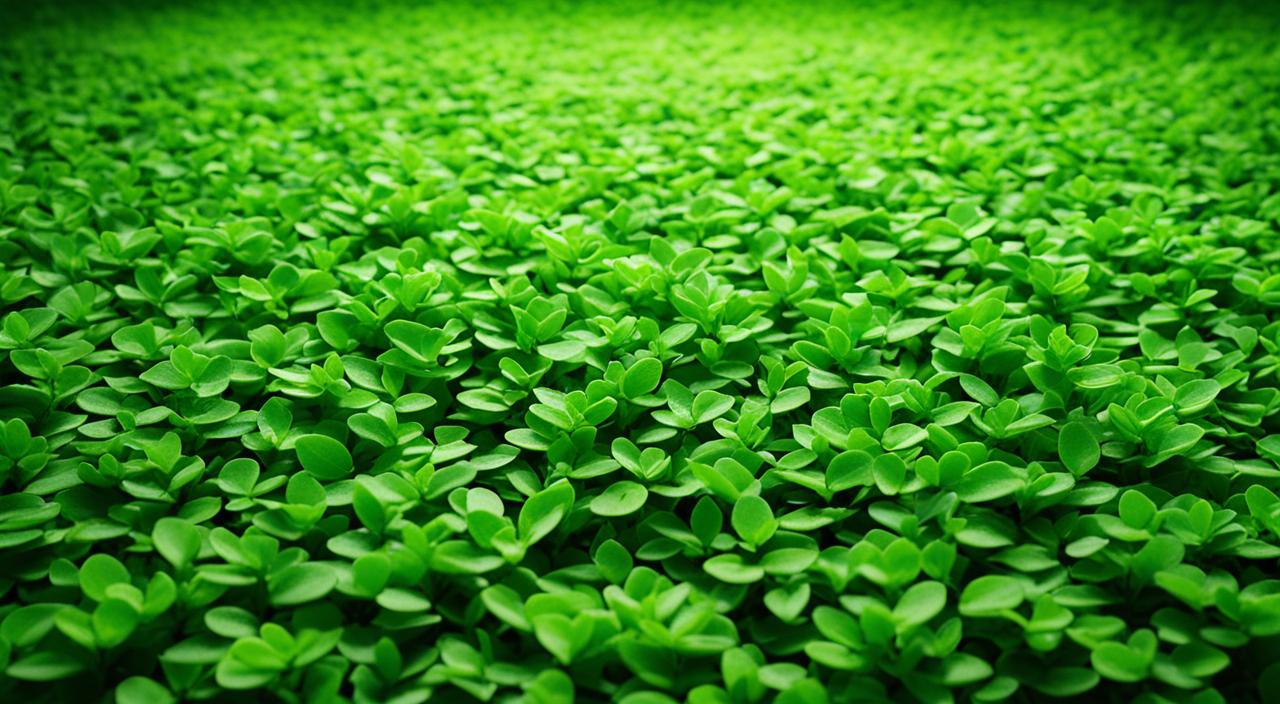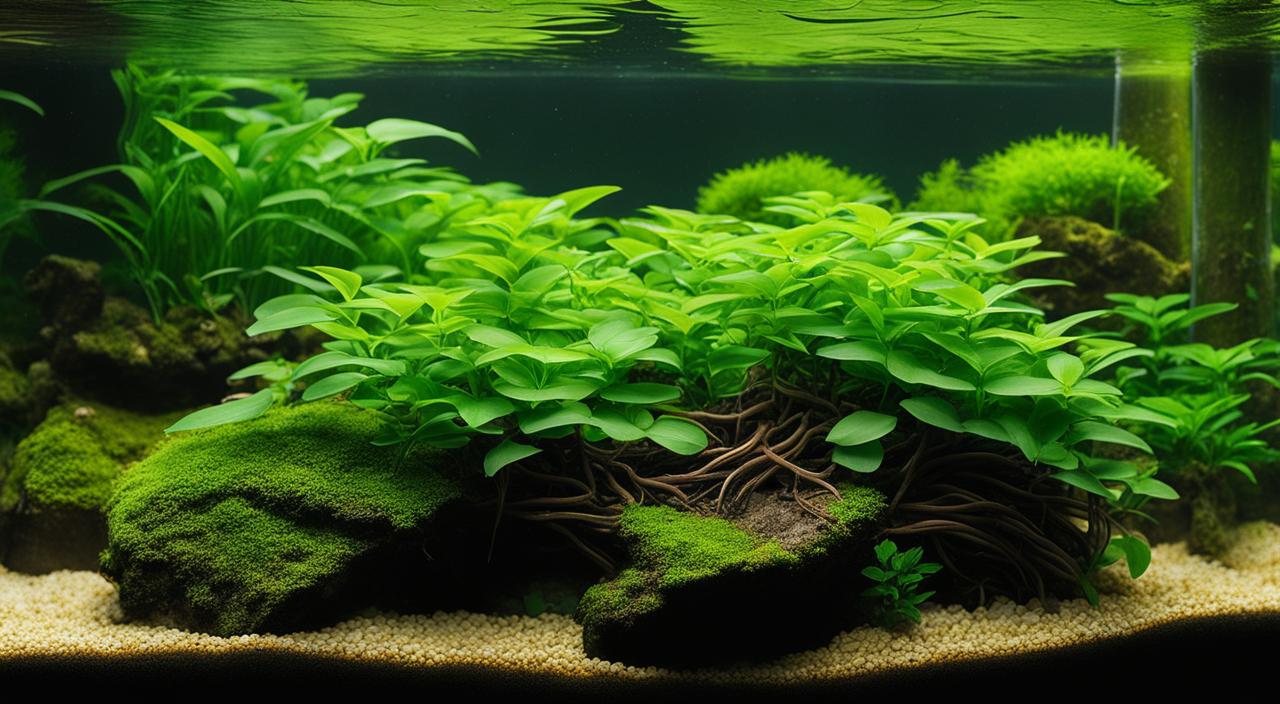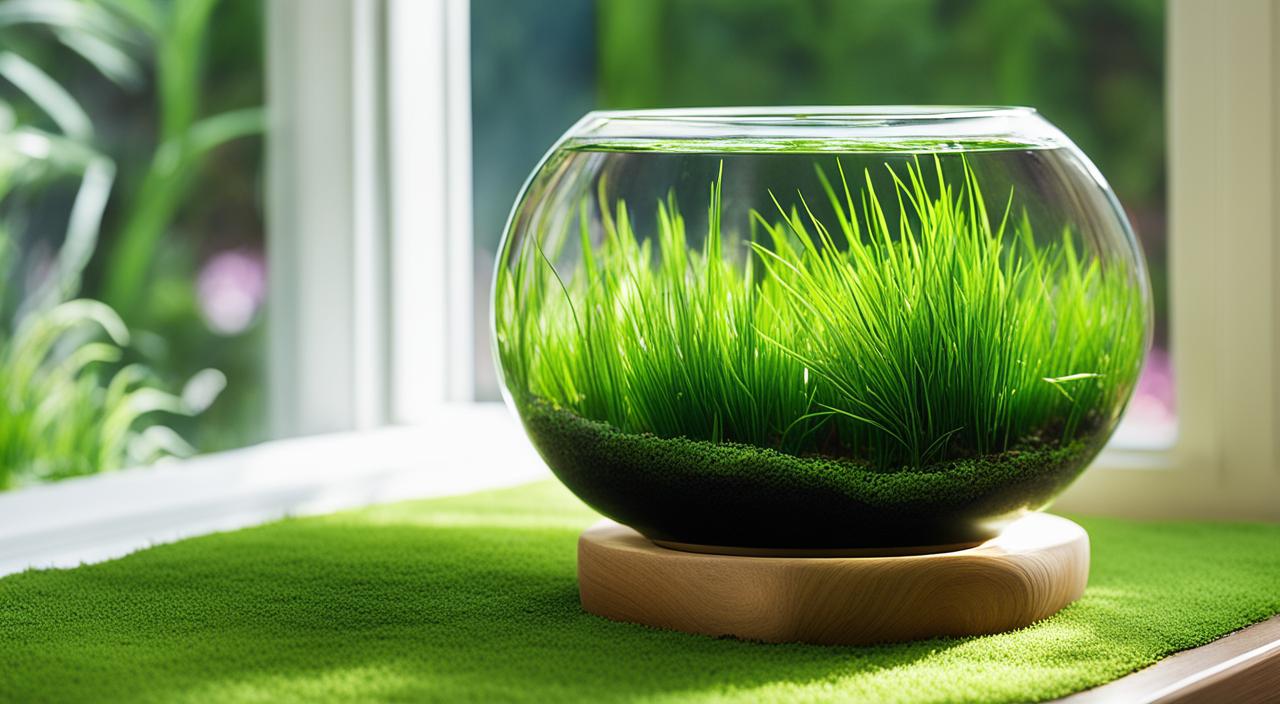Welcome to my article on Marsilea hirsuta, a fascinating aquatic fern species that is highly prized for its ability to create lush carpets in aquariums. If you want to add a touch of natural beauty to your underwater landscape, Marsilea hirsuta is a fantastic choice. This article will provide a detailed overview of this plant, including its care requirements, habitat, morphological characteristics, lighting needs, tank mates, feeding and fertilization, CO2 injection, aquarium maintenance, and health considerations.
Key Takeaways:
- Marsilea hirsuta is a popular carpeting aquarium plant known for its unique appearance and easy care.
- It belongs to the aquatic fern species and is highly sought after for its ability to create a lush green carpet in the tank.
- This plant thrives in low to medium lighting conditions, making it suitable for aquariums with limited access to light.
- Marsilea hirsuta is generally compatible with a wide range of fish and invertebrate species, but larger fish that may damage the carpet should be avoided.
- Regular feeding and fertilization, proper CO2 injection, and adequate care are essential for the health and growth of Marsilea hirsuta.
Brief Overview Of Marsilea hirsuta
Marsilea hirsuta is a small carpeting plant that forms a lush green carpet in the aquarium. It is known for its unique appearance, with four-leaf clover-like leaves that give it a distinctive look. This plant is relatively easy to care for, making it suitable for beginners and experienced aquarists. It is a low-light plant that can thrive in aquariums with limited lighting conditions. Additionally, Marsilea hirsuta can tolerate a wide range of water parameters, making it a versatile choice for aquascaping.
Marsilea Hirsuta Information Table:
| Runners: new plants form at nodes and can be separated and replanted | Description |
|---|---|
| Scientific Name: | Marsilea hirsuta |
| Common Names: | Dwarf Water Clover, Hairy Marsilea |
| Origin: | Australia |
| Height: | 2-10 cm (0.8-4 inches) |
| Growth Rate: | Medium |
| Colour: | Bright to dark green |
| Aquarium Placement: | Foreground, carpeting plant |
| Water Type: | Freshwater |
| pH: | 6.0 – 7.5 |
| Care Level: | Easy to moderate |
| Light Requirements: | Moderate; 30-50 PAR, 5000-7000 Kelvin, 10-20 LUX for optimal growth |
| CO2 Requirements: | Not necessary but beneficial for faster growth and denser carpets |
| Temperature: | 18°C – 28°C (64°F – 82°F) |
| Flow Rate: | Low to moderate; prefers gentle water movement |
| Propagation: | It is not necessary but beneficial for faster growth and denser carpets |
| Feed Type: | Root feeder; benefits from nutrient-rich substrate or root tabs, occasional liquid fertilizers |
The light requirements for Marsilea Hirsuta are moderate, with a PAR (Photosynthetically Active Radiation) range of 30-50 being ideal. This ensures the plant receives enough light for photosynthesis without being so intense as to cause stress or algae issues. A colour temperature (Kelvin scale) of 5000-7000K is recommended, providing a spectrum that supports healthy growth and mimics natural daylight conditions. LUX levels, measuring the intensity of light, should be maintained at around 10-20 for optimal growth, ensuring the plant receives a gentle but sufficient amount of light.
Origins And Habitat
Marsilea hirsuta is a native plant in tropical regions, particularly found in Asia. It grows in freshwater habitats such as lakes, ponds, and slow-moving streams. In its natural habitat, it often spreads along the substrate, forming dense carpets that provide cover and protection for aquatic organisms. In the aquarium hobby, Marsilea hirsuta is cultivated and propagated for its attractive appearance and ability to carpet the tank floor.
table
OriginNatural HabitatAsiaFreshwater habitats such as lakes, ponds, and slow-moving streams
Morphological Characteristics
Marsilea hirsuta exhibits fascinating morphological characteristics that make it stand out among other aquarium plants. The plant features small, clover-like leaves that closely resemble a four-leaf clover, adding a touch of uniqueness to any tank. These leaves grow on short stems, densely covering the substrate and creating a lush carpet effect. In addition, Marsilea hirsuta possesses rhizomes and horizontal stems that give rise to new leaves and roots, aiding in its growth and propagation. The colour of the leaves can range from vibrant green to a reddish tint, depending on the lighting conditions in the aquarium.
Placement And Lighting
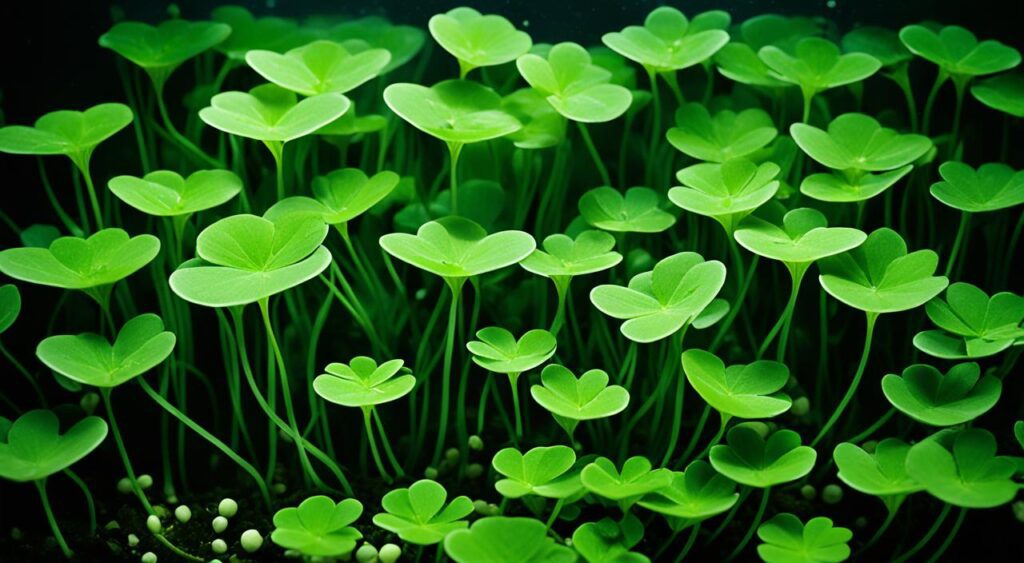
Marsilea hirsuta is a versatile plant that can be strategically placed in the aquarium to create visual interest. It is commonly used as a foreground plant to create a lush carpet effect, giving the tank a vibrant and natural look. Alternatively, it can also be placed in the midground to add depth and texture to the overall aquascape.
Regarding lighting requirements, Marsilea hirsuta is known for its adaptability to low-light conditions. This makes it an excellent choice for aquariums with limited natural or artificial light access. However, moderate lighting can promote even better growth and enhance the plant’s colouration.
What Are Good Tank Mates?
Marsilea hirsuta is a versatile aquarium plant that can coexist with various fish and invertebrate species. Its dense carpeting provides excellent cover and hiding places for small fish and shrimp, creating a natural and harmonious aquatic environment. When selecting tank mates for Marsilea hirsuta, it’s essential to consider the compatibility and behaviour of different species to ensure a peaceful and thriving community.
Good Tank Mates
Some compatible fish species that can peacefully cohabit with Marsilea hirsuta are:
- Neon Tetras
- Cherry Shrimp
- Dwarf Gouramis
- Rasboras
These small and peaceful fish species are known to respect the planted carpet and are unlikely to uproot or damage it.
Fish Species To Avoid
To protect the delicate carpeting plant, it is advisable to avoid larger fish species or those with a tendency to dig or disturb the substrate. Some fish species to avoid when keeping Marsilea hirsuta include:
- Cichlids
- Large Bottom-Dwelling Species
These fish can unintentionally uproot or damage the Marsilea hirsuta carpet, potentially leading to its deterioration or loss.
Feeding (Fertilization)
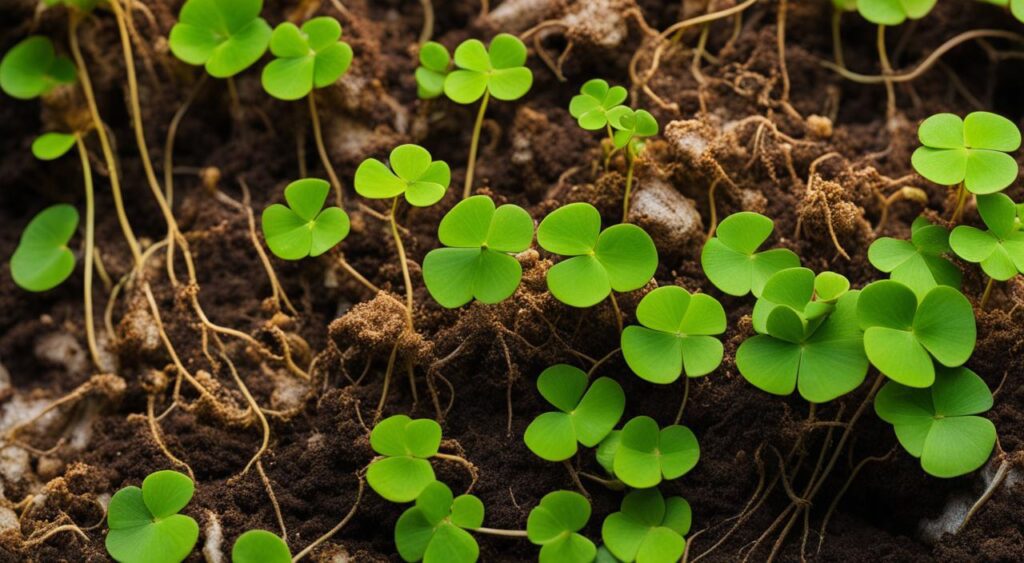
How Much And How Often To Feed
Marsilea hirsuta, like all aquarium plants, requires proper feeding to ensure healthy growth and maintenance of vibrant colouration. Feeding provides the necessary plant nutrients for its overall well-being. To meet the nutritional requirements of Marsilea hirsuta, liquid fertilizers designed explicitly for aquarium plants can be added to the tank.
When fertilizing Marsilea hirsuta, following the manufacturer’s instructions for the proper dosage is crucial. Overfeeding can lead to nutrient imbalances or promote the growth of unwanted algae. Additionally, excess nutrients can become problematic for other aquatic organisms in the aquarium ecosystem.
I recommend following a regular fertilization schedule that aligns with the specific needs of Marsilea hirsuta. Monitor the plant’s response to the fertilization regime and adjust as needed. This allows for optimization of nutrient intake, ensuring the plant’s healthy growth while minimizing any potential issues.
It is crucial to balance providing sufficient nutrients and avoiding nutrient excesses. By adhering to the recommended feeding guidelines, you can maintain the overall health and appearance of Marsilea hirsuta in your aquarium.
CO2 Injection
CO2 injection is essential to successful Marsilea hirsuta cultivation in the aquarium. Carbon dioxide supplementation is crucial in enhancing photosynthesis, enabling plants to grow faster and healthier. Different types of CO2 systems are available to meet aquarists’ specific needs.
Types
Two common types of CO2 systems for aquariums are compressed gas systems and liquid carbon additives. Compressed gas systems involve using a CO2 cylinder, regulator, and diffuser to introduce the gas into the aquarium water. This method offers precise control over CO2 levels and is suitable for larger tanks with high demand for carbon dioxide. On the other hand, liquid carbon additives provide a convenient and less expensive alternative for supplementing CO2 levels. These products are easy to dose and are suitable for smaller tanks or aquarists on a budget.
Care
Marsilea hirsuta requires specific care to thrive in the aquarium environment. Ensuring the right planted tank parameters, including appropriate water quality, filtration, and flow, is crucial for the plant’s overall health.
Planted Tank Parameters
For optimal growth of Marsilea hirsuta, it is essential to maintain suitable planted tank parameters. The ideal water temperature ranges from 72-82°F (22-28°C), providing a comfortable environment for the plant. The recommended pH level is between 6.0-7.5, ensuring a slightly acidic to neutral range that supports healthy growth.
Water Quality
Good water quality is essential for the well-being of Marsilea hirsuta. Monitoring and maintaining water conditions contribute to the plant’s health and vitality. Testing for ammonia, nitrite, nitrate, and pH levels is essential to identify any imbalances or fluctuations that may affect the plant. Keep the water clean and debris-free by performing regular water changes and removing any decaying plant material.
Filtration
An efficient filtration system is essential in providing clean and oxygenated water for Marsilea hirsuta. A quality filter helps remove impurities, excess nutrients, and waste products, ensuring a balanced and healthy aquatic environment. Choose a filter that suits the size of your aquarium and consider incorporating mechanical, biological, and chemical filtration mechanisms to maintain optimal water conditions.
Flow
Gentle water flow is preferred for Marsilea hirsuta to prevent uprooting or disturbance of the delicate carpeting plant. Avoid strong currents that may damage the plant or hinder its growth. Consider positioning the filter outlet or using an adjustable flow control device to create a gentle and even water movement throughout the aquarium. This will ensure that the plant remains securely rooted and can effectively absorb nutrients from the water.
| Planted Tank Parameters | Water Quality | Filtration | Flow |
|---|---|---|---|
| Water Temperature: 72-82°F (22-28°C) | pH Level: 6.0-7.5 | Efficient filtration system | Gentle water flow |
Aquarium Maintenance
Regular aquarium maintenance is essential for the health and longevity of Marsilea hirsuta. To ensure optimal plant growth conditions, it is crucial to test the water regularly and set up the aquarium tank correctly. Additionally, understanding propagation methods allows for the expansion and propagation of Marsilea hirsuta.
Testing Water Conditions
It is recommended to use appropriate test kits to monitor the water conditions in the aquarium. Testing parameters such as pH, ammonia, nitrite, and nitrate levels help maintain stable and optimal plant growth conditions. By regularly testing the water, necessary adjustments can be made to ensure the well-being of Marsilea hirsuta.
How To Set Up Your Aquarium Tank
Properly setting up the aquarium tank is crucial for successfully cultivating Marsilea hirsuta. This includes providing suitable lighting, substrate, and hardscape materials. Adequate lighting is necessary to support the plant’s growth while selecting the appropriate substrate and hardscape enhances the tank’s overall aesthetics. By carefully considering these factors during the setup process, aquarists can create an ideal environment for Marsilea hirsuta.
Propagation Methods
Understanding propagation methods is critical to expanding and propagating Marsilea hirsuta in the aquarium. Two standard methods are substrate runners and rhizome division. Substrate runners are thin stems that produce new plantlets along their length. By allowing these runners to spread and take root in the substrate, aquarists can expand the carpeting effect of Marsilea hirsuta. Rhizome division involves separating the plant’s rhizomes into smaller sections, each capable of growing into a new plant. By mastering these propagation methods, aquarists can enjoy the continuous growth and expansion of Marsilea hirsuta in their aquarium tank.
Health And Disease
Monitoring the health of Marsilea hirsuta is essential to prevent and treat any potential issues. Signs of good health include vibrant green colouration, new leaf growth, and a dense carpeting effect. Signs of poor health may consist of yellowing leaves, stunted growth, or decaying plant material. Common health issues affecting Marsilea hirsuta include nutrient deficiencies, algae overgrowth, or fungal infections. Timely treatment, such as adjusting nutrient levels, maintaining proper water conditions, and removing affected leaves, can help address these issues. Additionally, occasional inspection for plant pests, such as snails or algae, is recommended to ensure the plant’s health and well-being.
Summary
Marsilea hirsuta is a captivating carpeting aquarium plant that can elevate the aesthetics of any underwater landscape. Its lush green appearance and unique four-leaf clover-like leaves make it popular among aquarium hobbyists. The best part? This plant is straightforward to care for, making it suitable for beginners and experienced aquarists.
To successfully cultivate and enjoy Marsilea hirsuta in your aquarium, it’s essential to understand its origins, morphological characteristics, placement and lighting needs, compatible tank mates, feeding and fertilization, CO2 supplementation, care requirements, and general maintenance. This knowledge will help you create the perfect environment for this beautiful plant to thrive.
Regularly monitoring the plant’s health ensures its longevity and overall well-being. By promptly addressing any issues that may arise, such as nutrient deficiencies or potential pests, you can help maintain the vibrant colouration and dense carpeting effect Marsilea hirsuta is known for.
In conclusion, Marsilea hirsuta is a stunning carpeting aquarium plant that requires minimal effort to care for. With the proper understanding and attention to its needs, you can enjoy the beauty of this plant in your aquarium while creating a healthy and vibrant underwater ecosystem.
FAQ
What is Marsilea hirsuta?
Marsilea hirsuta, also known as dwarf water clover, is a popular carpeting aquarium plant belonging to the aquatic fern species.
What are the origins and habitat of Marsilea hirsuta?
Marsilea hirsuta is a native plant in tropical regions, particularly found in Asia. It typically grows in freshwater habitats such as lakes, ponds, and slow-moving streams.
What are the morphological characteristics of Marsilea hirsuta?
Marsilea hirsuta has small, clover-like leaves that grow on short stems. It also features rhizomes, which are horizontal stems that give rise to new leaves and roots.
Where should I place Marsilea hirsuta in my aquarium and what lighting does it need?
Marsilea hirsuta can be used as a foreground plant or placed in the midground for added depth. It thrives in low to medium lighting conditions, making it suitable for aquariums with limited lighting.
What are good tank mates for Marsilea hirsuta?
Marsilea hirsuta is compatible with a variety of fish and invertebrate species, such as neon tetras, cherry shrimp, dwarf gouramis, and rasboras.
How often should I feed Marsilea hirsuta and what fertilization does it need?
Marsilea hirsuta requires regular feeding with liquid fertilizers designed for aquarium plants, following a recommended schedule to avoid nutrient imbalances or algae overgrowth.
How can I supplement CO2 for Marsilea hirsuta?
CO2 injection can benefit the growth of Marsilea hirsuta. It can be supplemented using compressed gas systems or liquid carbon additives.
What care requirements does Marsilea hirsuta have?
Marsilea hirsuta thrives in stable water conditions with suitable temperature, pH, and filtration. It is important to maintain proper water quality and flow to prevent uprooting or disturbance.
How should I maintain my aquarium with Marsilea hirsuta?
Regular maintenance includes testing water conditions, setting up the tank properly, and understanding propagation methods for expansion and propagation of the plant.
What are signs of good health and common health issues with Marsilea hirsuta?
Signs of good health include vibrant green coloration and new leaf growth. Common health issues include nutrient deficiencies, algae overgrowth, and fungal infections.
What plant pests should I watch out for with Marsilea hirsuta?
It is recommended to occasionally inspect for plant pests such as snails or algae to ensure the plant’s health and well-being.
Can you provide a summary of Marsilea hirsuta’s key points?
Marsilea hirsuta is a captivating and easy-to-care-for carpeting aquarium plant. It requires suitable placement and lighting, compatible tank mates, regular feeding and fertilization, and proper care to ensure its health and longevity.

